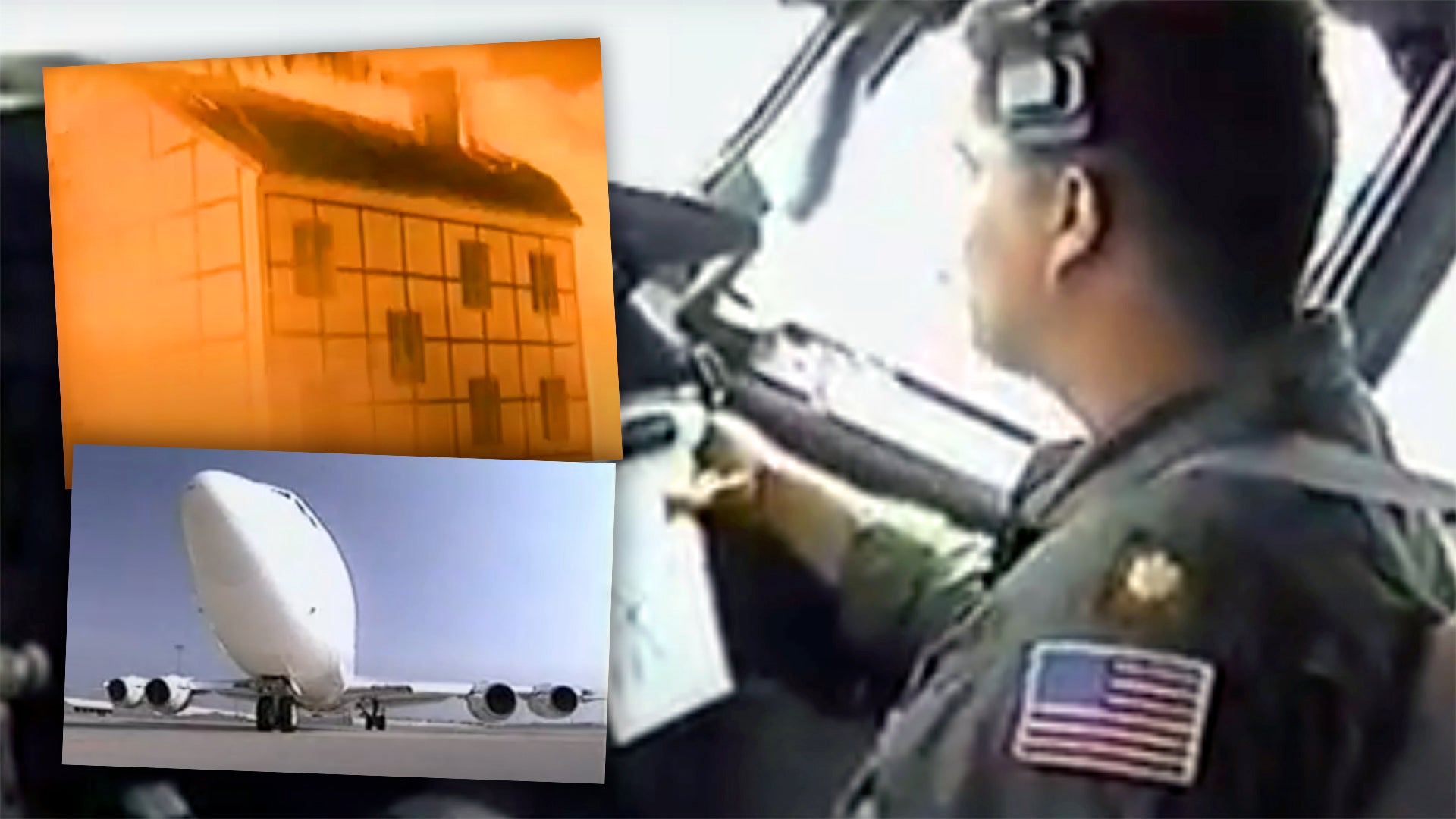You just have to love squadron videos. From the sublime to the ridiculous, it’s always interesting to see how crews celebrate their traditions and showcase the aircraft they operate. While naval fighter units unsurprisingly grab most of the attention, those tasked with operating America’s E-6B Mercury “Doomsday Planes” haven’t shied away from playing in this often bizarre medium. Since the most important job of the E-6B is to relay orders to launch volleys of nuclear-armed ballistic missiles during a nuclear apocalypse, the choice of music — the Talking Heads’ 1983 new-wave classic ‘Burning Down the House’ — is appropriate, especially since it is paired withstock footage of various nuclear tests literally blasting houses with their explosive firestorm. Yes, it is some dark humor, but how else do you deal with a job that can result in ushering in the end of the world as we know it?
The video in question was brought to our attention by Brad Howard, a producer at CNBC and himself a former U.S. Air Force enlisted aircrew member. Few details about the video are available, but it was uploaded to YouTube in 2010 and some portions feature the logo of Fleet Air Reconnaissance Squadron 4 (VQ-4), the “Shadows,” one of three Navy E-6B squadrons home-based at Tinker Air Force Base, Oklahoma, suggesting that crew from this unit may have created it.

Responsible for the “Take Charge And Move Out” (TACAMO) mission, providing airborne command and control support for America’s nuclear deterrent forces, each E-6B aircraft is manned by highly skilled crews who would be trusted to transmit Emergency Action Messages to ballistic missile submarines during a major crisis. The wartime TACAMO mission would include relaying orders to carry out a nuclear strike or even remotely initiating the launch of intercontinental ballistic missiles from their silos.
For this purpose, the aircraft features extensive EMP hardening as well as advanced and highly secure satellite communications and line-of-sight data-links, together with very low frequency (VLF) antennas. These can communicate with submarines down to a depth of around 60 feet, albeit transmitting at very slow data transfer rates. The submarines, in turn, have their own VLF trailing antennas to receive transmissions.

The video combines footage of daily E-6B operations from aboard the jet, on the flight line, and in the squadron ready rooms with library footage of Cold War nuclear tests, and ballistic missile launches from both land and sea. There are even cameo appearances by an Air Force B-2 Spirit and a Soviet Tu-95 Bear nuclear bomber.
One interesting sequence, from around 1:06 in the video, shows the deployment of the E-6B’s primary VLF antenna, which it uses to communicate with submerged submarines. A little over five miles long, the antenna is stabilized by a drogue on its trailing end. Also shown being deployed is the shorter VLF antenna that is reeled out from its tail. You can read all about this unusual maneuver in this previous War Zone
An animated sequence reveals how the Mercury pilots put the jet into a very steep and tight banking turn at slow speed to ensure that the antenna as close to vertical as possible, to maximize transmission effectiveness. These turns are typically repeated, often for hours at a time, to send messages.

While the video makes no attempt to hide the E-6B’s planned role in a potential Armageddon, the aircraft has other roles, too. They are also configured to serve as airborne command posts in other contingencies, such as nuclear disasters, and can even provide global weather forecasting.
Introduced to service in 1989, the original E-6A Mercury was later upgraded to the current E-6B standard, at the same time taking on the role of providing aerial command and control support for the Air Force’s intercontinental ballistic missile (ICBM) and nuclear-armed bomber forces.
Although the 16-strong E-6B fleet comprises some of the youngest Boeing 707 airliner-derivative airframes, plans are already afoot to eventually replace these aircraft. In a remarkable turn of events, the designated replacement for the E-6B is a modified C-130J-30 Hercules turboprop airlifter; a modern version of the EC-130Q aircraft that the E-6 replaced over 30 years ago. The E-6B is currently expected to remain in use until at least 2038.

Previously, there had been plans to replace not only the E-6B but also the Boeing 747-based E-4B Nightwatch National Airborne Operations Center (NAOC) and the Boeing 757-based C-32A Air Force Two executive transport aircraft with a single platform. This was known as NEAT, an acronym that described the separate NAOC, Executive Airlift, Airborne Command Post (ABNCP), and TACAMO functions, but in the event, the Air Force and Navy chose to go their separate ways. For its part, the Air Force is now focusing on the Survivable Airborne Operations Center (SAOC) program to replace the E-4Bs. Most recently, the Air Force seemed to commit to another 747-based platform.
It may not be the best-publicized naval aviation tasking, but there is no doubt that TACAMO is one of the most vital, as it is fundamental to the credibility of the U.S. nuclear deterrent. Bearing in mind the grave seriousness of the job, it is perhaps little wonder that the E-6B crews have, in the past, taken the opportunity to inject a little light relief into their essential, but dark mission.
Contact the author: thomas@thedrive.com
